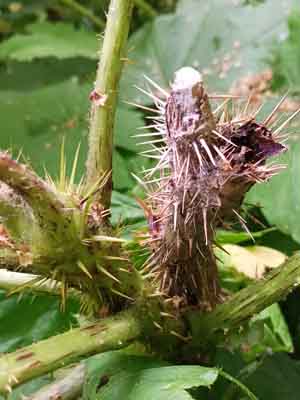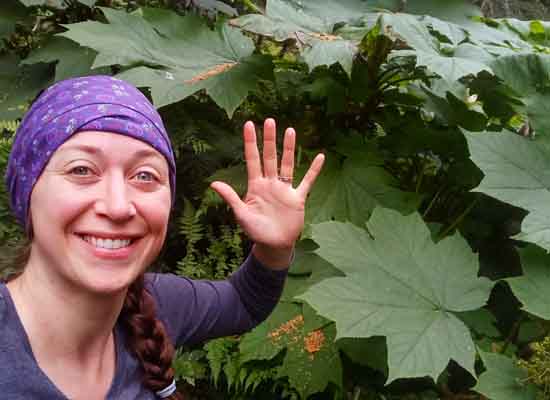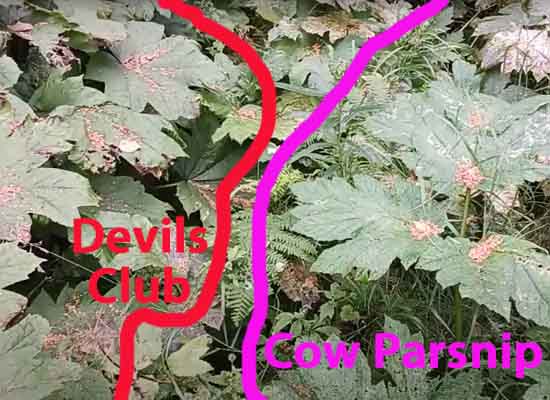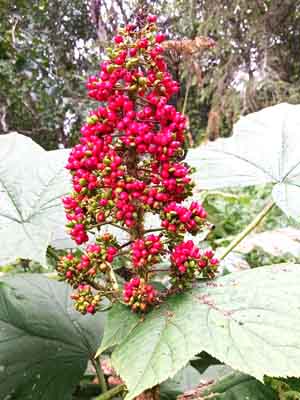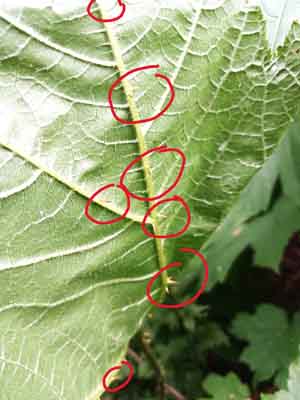Devil’s Club is a common wild plant in Alaska that’s large & covered in hidden sharp thorns, growing everywhere from remote forests to even well-groomed Anchorage city trails.
Just because you’re “in town” doesn’t mean you won’t run into devil’s club. It’s smart to stay on the trails, particularly if you’re not confident spotting it.
If you’re visiting, most locals are friendly & willing to help keep you safe if you have specific questions.
But if you want to learn how to identify it, here’s a good tutorial.
How to Identify Devil’s Club: What to Watch For
This tall, extremely thorny plant has a few noticeable giveaways to watch for:
- very large, wide green leaves
- in late summer/fall, red berries shaped like a cone (or “club”) at the very top
- long thorns on the underside of leaves, leaf stems, and main base
Devil’s Club Versus Cow Parsnip (a common lookalike plant)
There’s a common lookalike plant with similar leaf structure and coloration called cow parsnip.
It’s really difficult to tell these plants apart just based on their leaves. Devil’s club is often a little bit bushier & will have more leaves than cow parsnip. But this isn’t always the case.
Another good giveaway is that in the summer cow parsnip has a large, flat white bunch of flowers that sticks up from the top of the plant – unlike devil’s club, which has a large, bright red berry cone that pops up from the top of the plant.
Also, cow parsnip doesn’t have thorns, whereas devil’s club is completely covered. Devil’s Club even has hidden thorns on the underside of its leaves.
If you’re hiking in Alaska, it’s a good idea to always wear long pants. Even if your leg just gently brushes by a devil’s club leaf, you’ll probably get scraped by its sneaky thorns.
Exploring Alaska’s outdoors is an incredible experience – just make sure to be aware of your surroundings if you’re leaving the trails.

